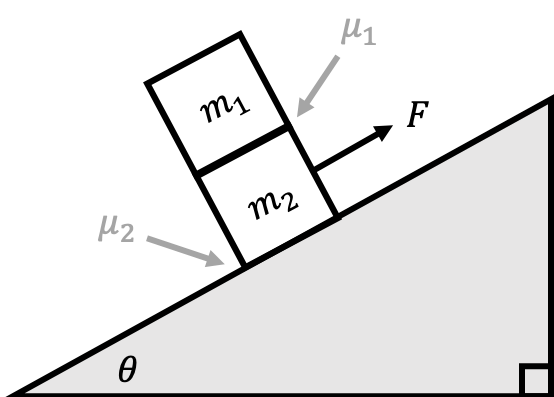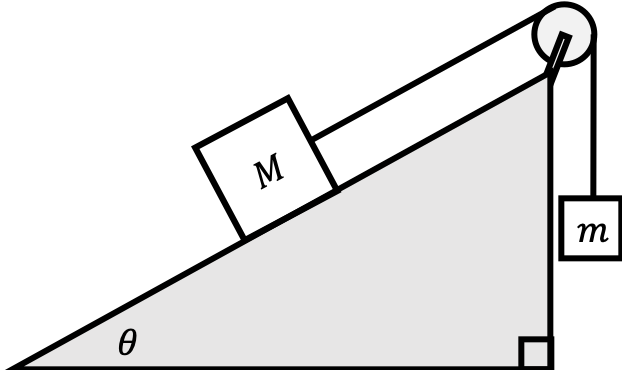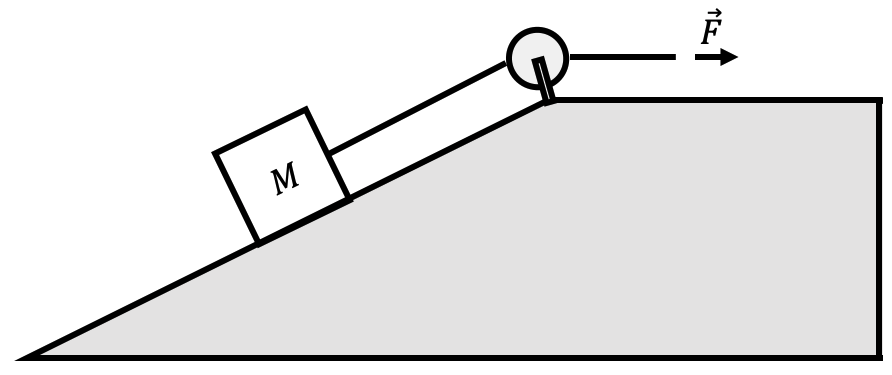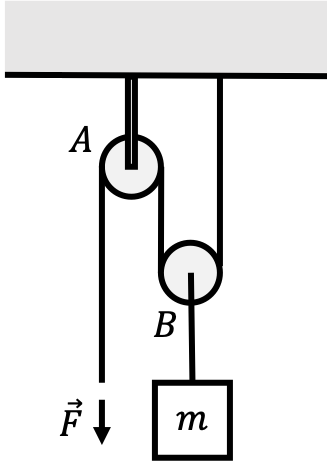Practice with Mechanical Equilibrium
Physics problems involving mechanical equilibrium are very common in introductory physics classes. For this reason, we will practice doing a couple of these problems today.
Example 1: Two Masses on an Inclined Plane
This problem is adapted from Caltech's Ph1a course.
Upon an inclined plane of angle $\theta$ is placed a block of mass $m_2$. Upon $m_2$ is placed another block of mass $m_1$. The coefficient of static friction between $m_2$ and the inclined plane is $\mu_{2s}$ and the coefficient of sliding friction is $\mu_{2k}$. Likewise, the coefficient of static friction between $m_1$ and $m_2$ is $\mu_{1s}$ and the coefficient of sliding friction is $\mu_{1k}$. A force $F$ upward and parallel to the plane is applied to $m_2$.

- What is the acceleration of $m_2$ when $m_1$ just starts to slip on it?
- What is the maximum value of $F$ before this slipping takes place?
Example 2: A Hanging Rope
This problem is adapted from Caltech's Ph1a course.
A rope of length $2l$ and uniform density (here: mass per unit length) $\rho$ is hanging over a nail in a wall with a piece of length $l$ on both sides. Friction, the thickness of the nail, and the thickness of the rope are negligible. When one creates a slight length difference between the two sides, a net force will start to act on the rope, and it will slide off the nail, faster and faster.
- When the length on one side is $l+x$ (with $0 < x < l$), what is the net force on the rope?
- Find the velocity as a function of $x$. Hint: make use of $\frac{dv}{dt}=\frac{dv}{dx}\frac{dx}{dt}$. What is the velocity when the rope completely comes off the nail?
Example 3: Pulley on an Inclined Plane
Two blocks of mass $m$ and $M$ are connected via pulley with a configuration shown below:

The coefficient of static friction is $\mu_s$ between the block and surface. What is the minimum and maximum mass $M$ so that no sliding occurs?
Example 4: Pulley on an Inclined Plane (Again)
This problem is adapted from this link.
A block of mass $M$ is pulled using a pulley at constant velocity along a surface inclined at angle $\theta$. The coefficient of kinetic friction is $\mu_k$, between block and surface. Determine the pulling force $F$.

Example 5: Two Pulleys
This problem is adapted from this link.
A block of mass $m$ is lifted at constant velocity using the two pulleys shown.

Determine the magnitude of the pulling force $F$. Ignore the mass of the pulleys.